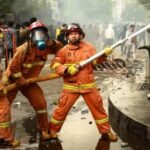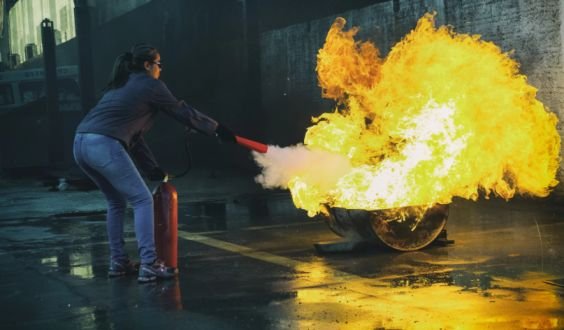
California’s recent wildfires underscore the critical importance of fire and safety rules in safeguarding lives and property. Fires, whether in homes, workplaces, or natural landscapes, can cause immense devastation and require a quick exit plan. This comprehensive guide offers actionable wildfire safety tips, fire safety tips at home, and fire safety tips in the kitchen to help you prepare, prevent, and respond effectively to fire emergencies. Follow these expert recommendations to protect yourself, your loved ones, and your community.
Wildfire Safety Tips: Protecting Your Home and Family
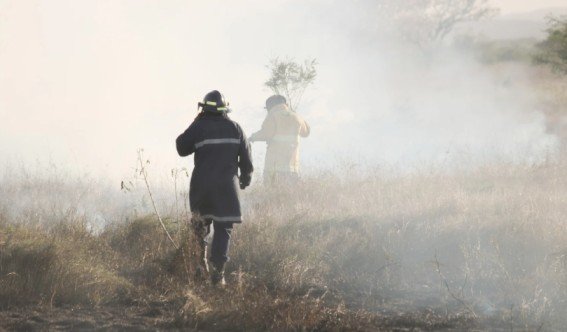
Wildfires are always a threat in California, and the best way to reduce the danger is to take proactive steps, such as developing a home fire escape plan. Here are some critical wildfire safety tips:
- Create a Defensible Space. Clear vegetation, debris, and flammable materials within 100 feet of your home to reduce fire hazards.
- Use Fire-Resistant Materials. Construct roofs, walls, and fences with non-combustible materials to enhance your home’s fire resistance.
In addition, ensure your emergency kit is stocked with essentials like water, non-perishable food, flashlights, and a battery-powered radio. Evacuation plans should be rehearsed regularly, and routes mapped out to ensure a swift and safe escape. For more information on creating a defensible space, visit the National Interagency Fire Center.
Fire Safety Tips at Home: Safeguarding Your Sanctuary
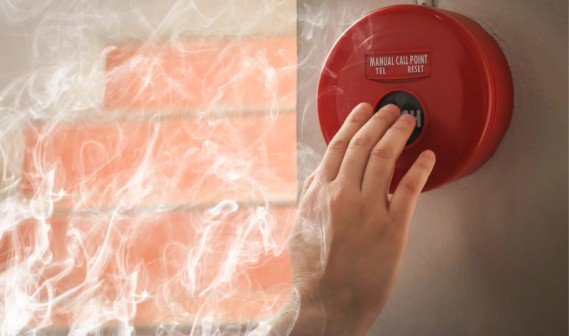
Your house is supposed to be a safe place and does not need to be at risk of catching on fire. Use these methods to ensure safety from fires in your house:
- Install and Maintain Smoke Alarms: Place smoke detectors on every level of your home and outside all sleeping areas for early warning. Test them monthly and replace batteries annually to ensure working smoke alarms.
- Have a Fire Extinguisher: Keep a multi-purpose fire extinguisher accessible in high-risk areas like the kitchen. Familiarize yourself with its usage to act promptly in emergencies.
Regular inspections of electrical systems and appliances can prevent overheating or short circuits, which are common causes of house fires. Always prioritize fire-safe practices in your daily routines. Learn about the latest fire-resistant building materials from the NFPA.
Fire Safety Tips in the Kitchen: Preventing Cooking Hazards
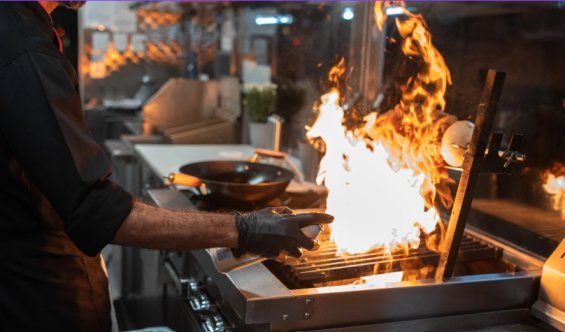
The kitchen is a hotspot for potential fire incidents. Follow these fire safety tips in the kitchen to avoid the leading cause of home fires.
- Stay present while cooking: to prevent any fire starts and ensure immediate action if needed. Never leave the stove unattended, especially when using oil or high heat.
- Keep Flammable Items Away: Keep towels, paper products, and curtains away from open flames or hot surfaces.
In case of a grease fire, avoid using water to extinguish it. Instead, cover the pan with a lid and turn off the heat source to smother the flames safely.
Fire Safety Tips at Work: Ensuring Workplace Security
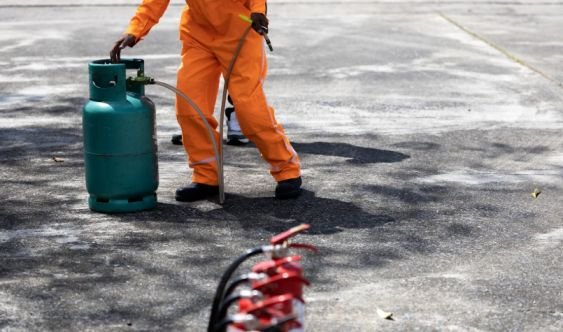
Workplace fire safety is a collective responsibility. Adhere to these fire safety tips at work:
- Conduct Regular Fire Drills: About evacuation procedures, practice twice a year to enable the employees to get acquainted with escape routes and the emergency protocols involved.
- Inspect Fire Extinguishers to ensure they are ready for use in case of a home fire. inspected it monthly and serviced it annually to maintain its functionality.
Other preventive measures regarding fires involve monitoring electrical systems to see signs of wear and tear. Also, avoid overload on the electric circuits.
Fire Safety Tips for Elderly: Special Considerations

Elderly individuals are at a higher risk of fire-related injuries, making early warning systems essential. These fire safety tips for the elderly can help:
- Install easy-to-use alarms: Use smoke alarms that comply with the National Fire Protection Association standards. Use it with strobe lights or bed shakers for those with sensory impairments.
- Develop a Personalized Evacuation Plan: Create simple escape routes and ensure access equipment is ready in case of evacuation.
Caregivers should routinely check heating systems, electrical cords, and cooking to eliminate fire hazards, ensuring a complete fire prevention plan is in place.
Fire Safety Tip: Stop, Drop, and Roll
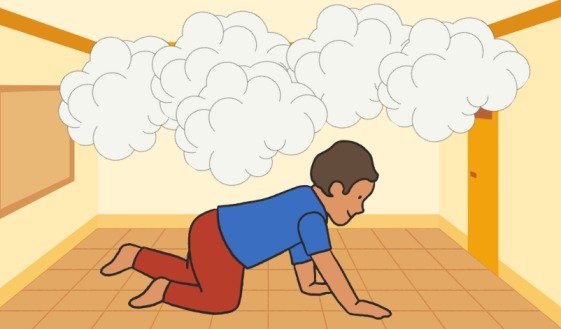
One of the treasured fire safety tips is the “Stop, Drop, and Roll” technique. Stop immediately when clothes catch fire and stop fanning the flames; if necessary, leave home. One should roll back and forth on the ground, covering your face with your hands until the fire is out. This skill could save lives, so learn and regularly practice it with your family.
FAQs
How often should fire extinguishers be inspected?
Fire extinguishers should be inspected monthly for visible damage and pressure gauge readings. Professional servicing is recommended annually.
Why is fire safety important?
It is essential to preserve life, property, and the environment from the devastating effects of a fire or any other similar disaster. Because of this, it is often neglected that precautionary actions should be taken in advance which, in effect, make sure one is ready and less likely to suffer an incident stemming from heaters, matches, or lighters.
What is the best way to stay safe from fire?
The best ways to stay safe are by installing smoke alarms, creating evacuation plans, and practicing fire drills. Always be vigilant and act quickly in emergencies.
Who is responsible for your safety during a fire?
While individuals are primarily responsible for their safety, employers, landlords, and community leaders share a duty to implement and maintain fire safety measures.
What are the five fire safety tips?
- Install and maintain smoke alarms.
- Create an evacuation plan.
- Make sure that fire extinguishers are readily available.
- Be careful while cooking.
- Avoid overloading electrical outlets.
What are the 5 E’s of fire safety?
- Education
- Engineering
- Enforcement
- Emergency Response
- Economic Incentives
What are the 10 easy steps for fire safety?
- Install smoke detectors.
- Test alarms monthly.
- Replace batteries annually.
- Develop a fire escape plan.
- Conduct fire drills.
- Prepare fire extinguishers and make sure that every member of the household knows how to use them effectively.
- Inspect electrical systems.
- Store flammable materials safely.
- Use fire-resistant building materials.
- Teach your family about fire safety procedures.
For more specialized tips, explore these guides: Wildfire Safety Tips, Fire Safety Tips for Preschoolers, Forest Fire Safety Tips, Fire Pit Safety Tips, Workplace Fire Safety, and Safety Tips Home. Stay informed and proactive to ensure safety for yourself and your community.



